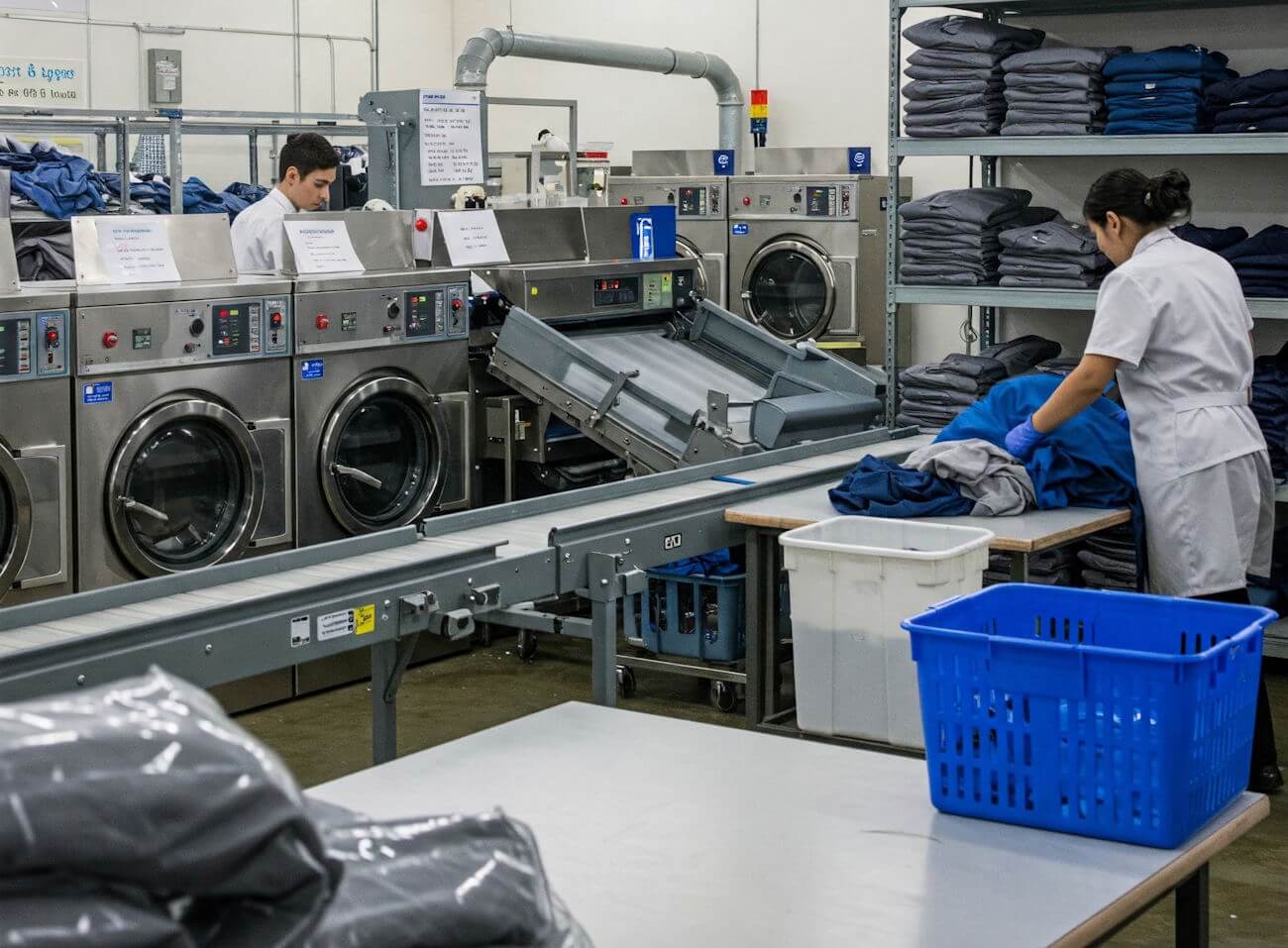What Happens to Rental Clothes After They’re Returned?
Rental fashion has emerged as a transformative approach to clothing consumption, offering an innovative solution for modern attire needs. In recent years, this phenomenon has gained substantial traction among consumers, driven by an increasing awareness of sustainability, economic advantages, and the desire for greater diversity in clothing options. As individuals seek alternative means to express their personal style, the appeal of renting garments—rather than purchasing them outright—has become evident.
One significant factor contributing to the popularity of rental fashion is sustainability. With the fashion industry known for its considerable environmental impact, many consumers are consciously opting for rental services as a means of reducing their carbon footprint. By renting clothes, individuals can enjoy new outfits without contributing to the excessive manufacturing processes that plague the industry. This choice supports a circular economy where clothing is reused and recycled, mitigating waste and promoting a more environmentally friendly approach to fashion.
Another compelling reason for the rise of rental clothing is affordability. In a world where fashion trends evolve rapidly, purchasing new outfits for every occasion can strain one’s budget. The rental model allows consumers to access high-quality, designer garments for a fraction of the buying price. This financial flexibility empowers customers to invest in their style without the burden of a hefty price tag, making it an attractive option for many.
Additionally, rental services provide consumers with unprecedented access to a diverse range of styles and sizes. Shoppers no longer feel confined by what is available locally; instead, they can explore various trends and brands from around the globe. This expanded access enhances individual expression and encourages experimentation, allowing people to curate their wardrobes in ways previously not possible. As the rental fashion sector continues to grow, understanding its impact on garment lifecycle post-return offers valuable insights into this evolving landscape.
The First Stop: Inspection and Quality Check
Once rental clothes are returned, they undergo a meticulous inspection process that is essential for maintaining the integrity and quality of the garments. This initial step is critical, as it allows rental companies to identify any damages, stains, or other issues that may have occurred during the rental period. Trained staff meticulously examine each item, checking for wear and tear, missing components, and any signs of malfunction or damage, such as broken zippers or loose buttons. Any issues discovered must be documented thoroughly for quality assurance purposes.
Stains pose a particular challenge in the rental clothing industry. Rental companies typically employ specialized cleaning professionals or use advanced cleaning technology to address any stains efficiently. Depending on the fabric type and the nature of the stain, a variety of cleaning methods may be used, such as steam cleaning, dry cleaning, or eco-friendly alternatives. Ensuring that all items are pristine and in their original condition is vital not only for customer satisfaction but also for the longevity of the garments themselves.
Beyond visible damage and stains, rental companies also consider the overall condition of items. This includes assessing how well garments have retained their shape and color, as well as checking for any unpleasant odors that could signal improper maintenance. Clothes that do not meet the established quality standards are either repaired or removed from circulation entirely. By conducting these thorough inspections and implementing quality control measures, rental businesses can ensure high standards and maintain customers’ trust. Thus, this stage serves as a crucial benchmark for determining a garment’s future within the rental ecosystem.
Cleaning Protocols for Rental Clothes
The cleaning processes employed by rental clothing companies are critical to ensuring that garments remain hygienic and presentable for future use. Upon the return of rental clothes, the first step usually involves inspecting each item for damage or stains. This inspection facilitates the determination of the appropriate cleaning method tailored to the fabric type. Understanding that different materials require specific care protocols, rental companies strategically implement cleaning techniques that uphold both the integrity of the garment and the satisfaction of the next consumer.
One of the most commonly utilized methods for cleaning rental clothes is dry cleaning. This technique is particularly effective for fabrics that are delicate or have more complex cleaning requirements, such as silk or wool. Dry cleaning uses chemical solvents, rather than water, to remove stains and dirt, which helps preserve the structure and quality of the fabric. Many rental companies rely on this process to ensure that garments maintain their aesthetic appeal and remain free of residual odors or marks.
In contrast, launderable items such as cotton or polyester may simply undergo traditional laundering. This method typically involves washing clothes in water and suitable detergents followed by drying at appropriate temperatures. While laundering is a straightforward procedure, it is essential for rental companies to monitor water temperatures and cleaning agents used, as these can affect the longevity and appearance of the garments. Moreover, integrating eco-friendly detergents aligns with the growing consumer demand for sustainable practices in the rental industry.
The significance of maintaining hygiene extends beyond appearance; it is a vital aspect of rental companies’ responsibilities towards their clients. Thorough cleaning protocols not only ensure the garments are fresh but also instill confidence in users regarding health and safety standards. By adopting diverse cleaning methods based on fabric needs, rental companies successfully navigate the dual challenge of maintaining clothing quality and meeting customer expectations.
Repairs and Maintenance of Damaged Items
When rental clothes are returned damaged or in need of repair, the rental business undertakes a systematic process to address these issues. Depending on the extent of the damage, the approach can vary significantly. Many rental companies have in-house teams dedicated to the assessment and repair of garments. This ensures a swift turnaround time for items that are minorly damaged, allowing them to return to the rental pool quickly. Common repairs include stitching tears, replacing buttons, and cleaning stubborn stains that may have occurred during the rental period.
For more significant damage that requires specialized attention, such as alterations or extensive fabric repairs, rental services might outsource the repair work to professional tailoring services or dry cleaners. This not only guarantees a higher quality of restoration but also promotes the longevity of the garments in circulation. By collaborating with experts in fabric care, rental businesses can extend the lifecycle of their items, making it a vital component of their operational strategy.
Additionally, many rental companies recognize the increasing importance of sustainability in fashion. By regularly assessing their inventory for wear and tear, they can implement preventative maintenance techniques and upcycling strategies. For example, items that are beyond repair may be transformed into new products, such as bags or accessories, thereby minimizing wastage. This environmentally conscious approach aligns with the growing trend towards sustainable fashion and helps to foster a more circular economy.
In conclusion, the way rental clothing businesses handle repairs and maintenance plays a crucial role in their sustainability. By employing both in-house solutions and outsourcing when necessary, they can effectively manage damaged items, ensuring that rental garments maintain their integrity and availability for future customers.
Restocking and Inventory Management
Upon the return of rental clothes, rental companies initiate a systematic process to manage their inventory effectively. This process begins with the inspection of returned items. Each piece is carefully evaluated for its condition to determine its suitability for re-rental. During this stage, the garments are checked for signs of wear, damage, or stains, which may necessitate special cleaning or repairs.
Once the items are inspected, the next step involves cleaning and maintenance. High-quality rental companies usually employ specialized cleaning services that ensure garments are not only cleaned but also maintained in excellent condition. This can include dry cleaning, steam cleaning, or mending minor tears. The goal is to uphold the standard of quality expected by customers, which in turn, enhances customer satisfaction and protects the brand’s reputation.
After cleaning, the inventory management aspect comes into play. Efficient inventory management systems track each item within the rental company’s database, updating the status of garments from “returned” to “ready for rent.” Rental companies utilize sophisticated software to monitor stock levels and item popularity, which assists in making informed decisions about which items to restock and which may be nearing the end of their rental lifecycle.
Some garments may be deemed unsuitable for future rentals due to excessive wear or changing fashion trends. In such cases, companies often decide to retire these items from their inventory. Others may be sold at discounted rates to make way for new stock. Ultimately, the decision-making process around restocking and inventory management is crucial, as it not only impacts operational efficiency but also the overall customer experience.
The Role of Sustainability in Rental Fashion
The concept of sustainability in fashion has gained significant traction in recent years, particularly with the rise of rental clothing services. This innovative approach to fashion not only offers consumers access to a diverse range of garments without the commitment of ownership but also plays a crucial role in reducing the environmental impact associated with traditional clothing production. By choosing to rent instead of purchase, individuals can actively contribute to lowering the demand for new clothing, which is often linked to unsustainable manufacturing practices.
One of the most compelling environmental benefits of rental fashion is its potential to significantly reduce textile waste. The fast fashion industry has been criticized for encouraging overconsumption, leading to large volumes of discarded clothing that ultimately end up in landfills. Rental services operate on a model that promotes circular fashion, thereby extending the lifecycle of garments. When clothes are rented multiple times, their environmental footprint is distributed across numerous users, resulting in a lower per-wear impact.
Additionally, rental fashion contributes to a reduction in carbon emissions, which are inherently tied to clothing production processes, including cotton farming, dyeing, and distribution. By minimizing the need for new items, rental services effectively decrease the carbon footprint associated with these activities. Many rental companies emphasize sustainable practices in their operations, such as using eco-friendly materials, optimizing logistics for efficient delivery and returns, and adopting responsible laundering methods. These efforts demonstrate that sustainability is not merely an afterthought but a fundamental aspect of their business model.
As consumers become increasingly aware of the implications of their purchasing decisions, rental fashion presents a viable alternative that aligns with ethical and sustainable values. By embracing this model, individuals can help foster a more sustainable fashion industry, contributing to a healthier planet while still enjoying a varied wardrobe.
What Happens to Unrented or Retired Items?
In the rental clothing industry, not all items maintain their rental appeal indefinitely. When clothing pieces become unprofitable or fail to attract renters, rental companies must carefully evaluate their options. This analysis largely revolves around the condition of the items, market demand, and the company’s sustainability practices.
One common fate for unretired or underperforming clothing items is donation. Many rental companies establish partnerships with charitable organizations, allowing them to contribute functional clothing to those in need. This approach not only supports the community but also helps companies enhance their corporate social responsibility profiles. Additionally, donating items can provide tax benefits, which further incentivizes companies to take this route.
Another viable option is recycling, particularly for items that exhibit significant wear and tear. Companies typically assess the fabric composition of un-rented items to determine their recyclability. Certain materials can be repurposed into new textiles or used to create insulation and other products, thus minimizing landfill waste. For environmentally conscious rental businesses, recycling aligns with their sustainability goals while also addressing the overconsumption crisis in the fashion industry.
Reselling is yet another strategy that rental companies may employ in managing their inventory of retired items. By offering past-season or surplus items at discounted prices through online platforms or pop-up events, companies can recoup some of their initial investments. This method may appeal to budget-conscious consumers seeking quality clothing at lower prices and serves to generate additional revenue.
Ultimately, the decision on how to handle un-rented or retired items depends on various criteria, including brand image, item condition, environmental policies, and consumer demand. Through thoughtful assessment, rental businesses can navigate the post-rental landscape effectively, contributing positively to both their financial objectives and the broader goal of sustainable fashion.
Customer Return Experiences and Feedback
In the rental clothing industry, the significance of customer return experiences cannot be overstated. When customers return items, their feedback plays a critical role in refining operational practices. Rental companies must actively listen to their clientele to understand how the items were received, worn, and subsequently returned. This feedback directly influences the condition assessment of returned clothing, which in turn informs cleaning processes and inventory management strategies.
Customer feedback often highlights specific issues related to garment quality, cleanliness, and overall satisfaction with the rental experience. This information is invaluable, as it provides insights into potential areas for improvement. For instance, if multiple customers report that a certain item arrived with visible wear or stains, the rental company can quickly take action to address the cleaning protocols or consider removing the item from their inventory altogether. A continuous loop of feedback and response helps companies maintain a high standard for the items in their portfolio, ensuring that customers receive garments that meet their expectations.
Moreover, maintaining customer trust hinges significantly on how well companies respond to this feedback. When customers feel that their concerns are acknowledged and addressed, they are more likely to continue renting, leading to long-term loyalty. Open communication regarding the condition of returned items also enhances transparency, enabling customers to make informed choices during their rental experience. Successful rental companies adopt a systematic approach to both gathering feedback and implementing changes based on that input, ultimately fostering a more positive and trustworthy relationship with their clientele.
In summary, customer return feedback is integral not only to securing satisfaction but also to improving operational efficiencies in the clothing rental sector. By focusing on the customer experience, rental companies can adapt to meet the ever-evolving demands of the market.
Conclusion and Future of Rental Fashion
In this blog post, we have explored the lifecycle of rental clothes, from their initial procurement to their eventual return and processing. The rental fashion industry has experienced significant growth, fueled by changing consumer behaviors, sustainability concerns, and the onset of digital technology. As we look toward the future, several emerging trends are poised to further revolutionize this sector.
One notable development is the integration of advanced technology in inventory management systems. Innovations such as artificial intelligence and machine learning are enhancing how rental services manage their stock. By predicting demand patterns and optimizing the flow of rental clothes, companies can ensure that their offerings remain diverse and appealing to consumers. This technology enables quicker turnaround times and improved customer satisfaction, which are critical in a fast-paced fashion environment.
Additionally, the implementation of comprehensive customer feedback mechanisms is anticipated to play a significant role in shaping rental fashion. Brands that efficiently gather and analyze consumer feedback can gain invaluable insights into preferences and trends. This empowerment of consumer voice is likely to lead to a more tailored rental experience, offering styles that align closely with customer desires while maintaining a focus on sustainability.
As we reflect on these aspects, it is evident that the future of rental fashion is promising. A synergistic blend of technology, consumer engagement, and sustainable practices can redefine the dynamics of fashion consumption. By creating a more efficient, responsive, and responsible rental process, the industry can enhance the lifecycle of rental clothes, fostering a deeper connection between consumers and their preferred styles. Ultimately, the evolution of rental fashion presents exciting opportunities that align with modern values and environmental stewardship.







